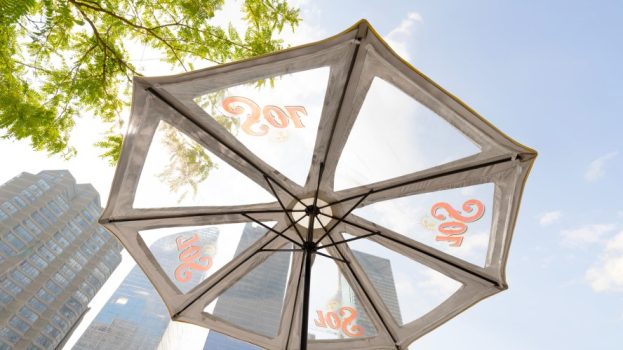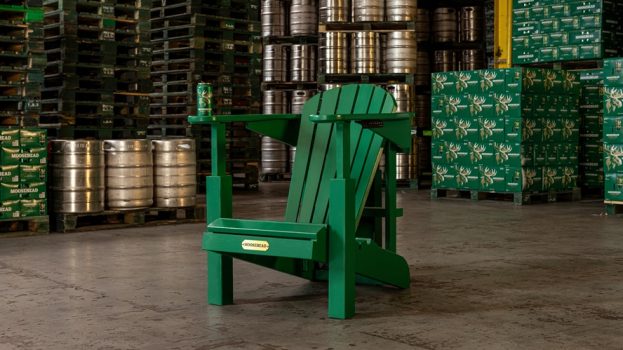By Will Novosedlik
If you’re a craft brewer these days, you also need to be a crafty operator.
A couple weeks ago, James Watt, the controversial founder of Scottish craft brewer BrewDog, used a LinkedIn post to vent about inflation.
His opener was unequivocal: “The inflation numbers are lying to us.” Apparently, even though the official rate of inflation in the UK was 10.1% for the month of July, Watt claims it costs him 25% more to make a case of Punk IPA today than it did in 2021.
Says Watt, “We have seen huge increases in the prices of electricity, gas, transport logistics, wages, malted barley, hops and our packaging materials like aluminum and cardboard.” While none of those inputs, outside hops and barley, are unique to microbrewers, if Watt were to increase his prices to retailers by 25%, his beer would end up costing 38% more on shelves.
That’s not a cost craft breweries can pass on to customers, who already have less money to spend due to inflation woes of their own. Brewers’ alternatives include cutting corners on quality inputs or engage in shrinkflation by reducing the size of a serving while charging the same price. Neither is a viable option for BrewDog.
“Our beer has always been incredibly expensive to make versus the mainstream beers,” adds Watt. “We brew our beer with almost 40 times more hops than the average lager and we also don’t use any cost-saving substitutes. All of our beers are carbon negative, which also adds to our cost base.”
Watt came under fire last year when almost 300 former and current BrewDog employees signed an open letter accusing Watt of inappropriate behaviour and creating a toxic workplace – for which he apologized in a LinkedIn post, along with an outline of reviews and surveys that would be taken to improve workplace culture.
Although Watt may not be the most highly regarded brewer in the game right now, the price issues he highlighted track with the challenges Canadian companies are facing. Todd Lewin, president of Muskoka Brewery, rattles off his own list of cost-based pain points. “If you’re just looking at our raw materials and production input costs, we’re up around the 25% mark compared to last year. Our cans are up 21%, our cartons are up 11%, malt is up 33%, CO2 is up 11%. And even looking at our sales team and our fleet, there is basically the same number of vehicles on the road, but our fuel costs are up about 30%.”
For companies selling into other provincial markets, that 30% hurts even more. And it’s far worse for those shipping to overseas markets. The cost of a shipping container has increased tenfold, from $2,000 last year to $20,000 this year.
So what’s a craft brewer to do? Says Lewin, “We’ve taken some small tactical price increases, SKU by SKU, depending on what we see competitively. But these increases are only in the 3% to 5% range, so it’s definitely not offsetting that 25% hit that we’re feeling. We’re having to absorb a heck of a lot of that, which isn’t a great margin story.”
In previous times, another lever has been the cost of labour. Not now. Muskoka Brewery just gave its staff a mid-year bonus to acknowledge the pinch everyone is feeling and to retain staff amid a labour shortage.
Product diversification is a route many microbrewers have taken in recent years, especially in the RTD category, and Muskoka Brewery is no exception. This summer, it launched its malt-based Squeeze the Day at the LCBO: since there’s always leftover malt in a brewery, repurposing it beyond what’s required to make beer is operationally efficient.
One of the more vexing challenges in an inflationary environment is forecasting. “I think you have to be way better at it than ever before,” says Lewin. “Not only are prices going up, but in a lot of cases, our lead times are doubling. In the past you’d have to be six weeks out to order cards for our 12 packs. Now you’re 12 or 18 weeks out. And because you’re further out, you have to take in a greater amount of inventory earlier and warehouse it. There’s a cost to doing that.”
Over at Toronto-based Junction Brewery, the story is a little different. CEO Stuart Wheldon – whose background is in technology – worked for several years in the UK and Europe before returning to Canada to run Junction. The ten-year-old brewery enjoyed great local success, especially in the west end of Toronto where it was based. By 2018, it was ready to expand its facilities and did so, taking a space ten times bigger. But COVID took its toll and the business was restructured, putting Wheldon in charge of overseeing what is essentially a new business.
To survive the pandemic, Junction pivoted to wholesale. “We actually started making products for other people because we needed to grow the business quickly during COVID in a very crowded, noisy market,” explains Wheldon. “We have a fantastic facility and a very experienced team. And so we’ve now rebranded Junction as a beverage company, not just a beer company.”
The company now makes its own beer under the Junction and Woodhouse brands, and has more than 30 partners for whom it makes products ranging from sparkling flavored water, to non-alcoholic beer, to vodka-based RTDs – assisting entrepreneurs and marketers with great ideas to take new brands to market and helping them with production.
So what does all this say for the future of the craft beer industry? “You’re going to see some fallout in the next year or two; it’s going to be very competitive and we all can’t survive,” says Wheldon. “Part of us going through our restructuring was to clean up our balance sheet so that we were financially in a very good position to grow very quickly and allow us to do things like our acquisition of Woodhouse, which helped grow the business.”
Citing the fact that Steam Whistle bought Beau’s recently and Amsterdam was sold to Denmark’s Royal Unibrew, Wheldon says: “We’re open to potential synergies with other companies because we believe there’s going to be a lot of consolidation.”
























